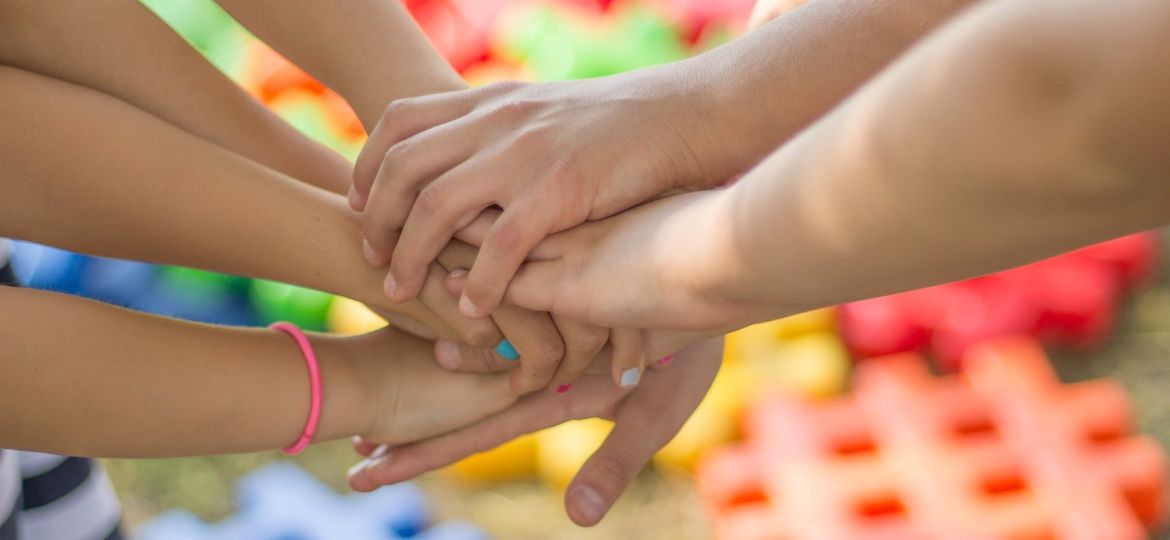
One of the toughest things in life is to accept help when we need it. When something happens to someone you know and love, it’s natural to want to support them, but a veil of discomfort may blur the situation, regardless of how well you know the person. This feeling is very real because receiving support can be a sensitive issue.
Bringing children into the situation adds another layer of complexity—but there are still ways to offer assistance.

According to Aimee Kandrac, the CEO and founder of WhatFriendsDo—a company that creates organized and actionable support for friends in need—being proactive with an offer to help has a higher probability of being well-received. Asking, “Is there anything I can do?” or “Let me know if I can do anything,” is rarely met with a solid request. Kandrac’s advice is to be specific, such as, “May I bring your child home from preschool today?” or, “I am running by the store, what can I grab for you? Wine?”
Each situation is unique. Your relationship to the person dictates the type of help you provide, but you may also want to consider how much you’re already currently balancing in your life.
“Before committing yourself, consider how supporting someone during a challenging time can blend in with your routine. As a mom, I can attest to over-committing and overwhelming myself. This is hard to avoid, but you should, because supporting someone could be a marathon of tag-teaming with other friends,” says Kandrac.
“In regards to supportive teams, the WhatFriendsDo app was designed for these scenarios. I strongly suggest starting with what you can bring to the table by considering your gifts. Let’s be honest, not all of us enjoy cooking. Personally, I prefer baking, and my kids love caring for other people’s pets. If the family you are supporting has children, there is a strong potential for at least one animal in the house,” Kandrac explains.

While you’re assessing what you might offer, you can consider including your own children in the process in creative ways. The ages of the children matter, and children will know something is wrong or different, especially if the person you are supporting is quite close to your family. Psychotherapist Michelle Gambs, who specializes in families with young children, promotes sharing some information with your children.
“Be sensitive to their age and listen and watch their reaction,” says Gambs, MA, LMHC, parent coach, and author of “Stay Away from Option D.” “You do not need to give all of the details, especially sensitive information. Start with the basics and gauge how much more info is wanted. Kids are curious and resilient. They may want to help too.”
Kids thrive on structure, and anything you can do to help facilitate a sense of normalcy during a challenging time, both for your family and for the family that has been affected, is greatly appreciated. Engaging kids in support of loved ones and friends can vary from having them help with meal prep to offering up their lawn mowing services.
If the family that you’re seeking to help has children of their own, here is a short list of ideas from Kandrac on what you can offer to help that you can get your own kid(s) involved with:
- Pack school lunches for the children.
- Help prepare a child to get ready for the school year by going supply shopping.
- Do your friend’s children need a haircut? This could be a huge help if the parent could allocate this to someone providing support.
- Bring a bunch of healthy snacks over to their house. Kandrac advises skipping the candy and anything messy, and when dropping off food, using recyclable, non-returnable containers.
- Have your child make a card or artwork.
- Offer to help with a child’s homework.
- If kids are in a school production, help with costumes or outfits.
- Do laundry for them.
- Take outdoor flowers to their front porch.
- Rally the neighbors to help with weeding and grass cutting.
- Provide supportive childcare and/or playdates.
- If someone cannot come outside, have your kids do something fun in their front yard that’s visible from a window to show support.
No matter what you choose to do, just make sure to take time to be there for your friend. “This is important: When your friend is sharing what’s going on, listen to them. It’s important to support them and not pity. This is not the time to offer any advice on what you would do differently,” suggests Kandrac. “Just. Listen.”
Supporting others is not an exact science. The most important thing is to reach out. Everyone feels more supported when someone reaches out. This is what friends do.
Kara Kavensky is an expert storyteller and strategic communications and PR consultant. Her memoir “Finding Joy” will be released later this year. Visit karakavensky.com to learn more.
All of our content—including this article—is completely free. However, we’d love it if you would please consider supporting our journalism with an Indy Maven membership.






